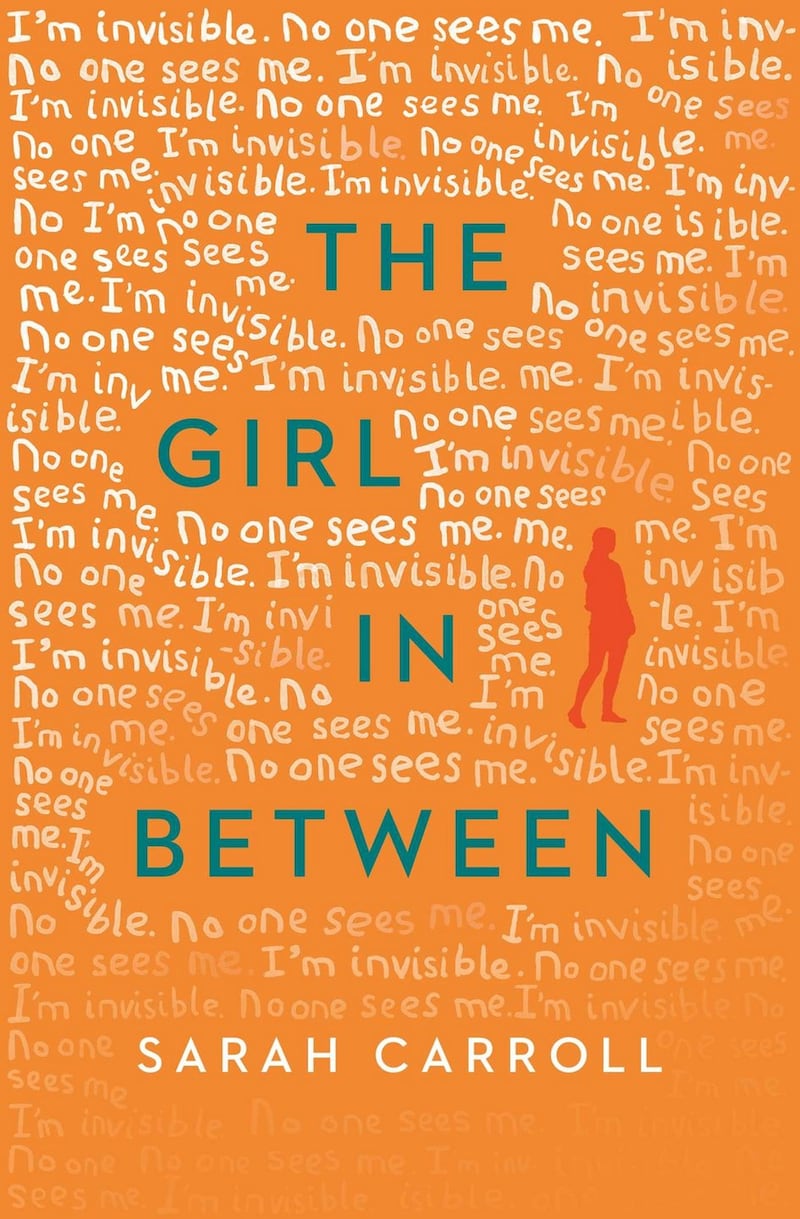Sarah Carroll’s debut YA novel, The Girl In Between (Simon & Schuster, £6.99) introduces us to a fearless and unique heroine in narrator Sam, a young woman struggling with homelessness and her relationship with her mother. Both topical and timeless, Carroll’s first novel offers up an astute portrayal of what it means to live life as “invisible”.
Although this is her first published work, Carroll is far from a beginner: “I have one completed manuscript (which will probably never see the light of day), two novels partially completed (15,000 words written for each, with chapter summaries for the remaining chapters), and a couple of sketched-out ideas,” she admits. She’s currently working on her second novel, which is scheduled to be released next year.
Incidents are based on observations of what it means to be homeless in Dublin; the tents on Sandymount strand, the beggars on our bridges, among the trees of the Phoenix Park
The Girl In Between features an important setting, inspired by Boland’s Mill in Dublin. Carroll – who spent several years travelling abroad before returning to Dublin – notes that she loves “to begin with a setting that’s relatively cut-off from the outside world, as that allows me to build a micro-universe that holds a mirror to the world at large. So the setting is usually the first thing I decide on (an old church, a ship, an island, a farmhouse), followed by theme, then character, then plot. Some of my novels are set in places I have travelled to or I have lived in, like northern and eastern Africa. However, the main way travel influences my writing is that it helps me to experience and feel things anew, which I draw on when writing.”
Despite these broader influences, her take on homelessness in Dublin has been thoroughly researched. “I’m not sure ‘research’ is the right word,” she demurs, “but every character in the novel, and all of the experiences described, are based on homeless people I have met or observed. For example, Caretaker is an amalgamation of many homeless men I have chatted to. Of course, the main inspiration for his character was the homeless man who used to sleep in the shadow of Boland’s Mills. The idea of him selling books, however, came from a British man who used to sleep rough in Dún Laoghaire. Like Caretaker, people could buy his second-hand books or swap theirs for a few pounds, (though he was more willing than Caretaker to discuss books with passer-bys!) The reference to Caretaker’s Arctic travels comes from a wandering Irish man that I met in Spain one February. He was homeless and each year he migrated south to escape the bleakness of living on the streets throughout the Irish winter.

“I knew from the outset that Caretaker would help to save the girl, and that came from the story of the homeless man who was always somewhere on the UCD campus when I was a student there and, legend had it, one night saved a female student from an attack.
“As for other incidents throughout the novel, they are based on observations of what it means to be homeless in Dublin; the tents on Sandymount strand, the beggars on our bridges, the shifting cardboard and plastic among the trees of the Phoenix Park.”
When it comes to the invisibility that her protagonist experiences, Carroll explains: “the idea of invisibility came from my own reactions, my own feelings. Haven’t we all walked past the begging cup, crushing the call for spare change with our quickened step, yet unable to out-run the guilt that clings like a fine mist? I knew what it felt to be on that side, but I wanted to step over the begging cup and try to imagine what it must feel like to be on the other side, to be invisible.”
Sam’s voice is still often very innocent or, as Carroll puts it, “relentlessly optimistic and loving. To be in her head was a joy, as I could live through the world as she does, finding wonder in the ordinary, and beauty in the brutal. With this in mind, it was not difficult to paint scenes from her perspective.”
But getting Ma right was trickier – “to show that the way she loved was flawed, but that she loved nonetheless. This is what we (my editors and I) focused on the most during the editing process, trying to bring out Ma’s humanity.”
As a novel for young teens, it may be considered too “dark”, but Carroll notes that once she “committed” to the book, it was not an issue. “If there is darkness, it is a darkness that too many people regularly have to struggle with. I couldn’t tell this story and not delve into that. I knew I needed an innocent, optimistic voice to pull it back from despair, and the girl’s character was built knowing I needed her voice to tell this story. But to not show (or, at least, not allude to) the harsher realities would have been disingenuous. People need to choose for themselves if they want to read this story, but if they chose to read it, then it is my responsibility to tell it as truthfully I can.”
What the audience is left with is a text that is authentic and real, a story that is well worth reading (at any age). Sarah Carroll has established herself as a promising Irish writer – here’s to her next book.
Five writing tips from Sarah Carroll:
- I think the best advice is to not put pen to paper until you have sketched out the plot in 300 words. Personally, I write an overall summary (of theme, plot and character development), then the first 10,000 words, and then a chapter by chapter summary. Then I go back and revisit theme and character development, and make sure the voice in my first chapter is as good as I can get it, as that will provide the template for the whole novel.
- It's so important to know your story as well as you can before you write it. Not only does it save a huge amount of time on rewrites, but it helps to make the writing shine. For example, a lot of the metaphors in The Girl in Between are to do with water (Ma's eyes go as deep as the canal) because I wanted to build an unconscious feeling of sinking/drowning, so that the reader can almost physically feel the release at the end. If you don't know where your story is going, it's hard to give it layers/depth.
- As for a good writing group, firstly, you should find a group that suits your genre. The approach to writing for YA is very different from crime writing. You need to be critiqued by people who know your genre. Secondly, if you have a small group that meets regularly, you get to know each other's work, but you get to know each other's preferences too, and that helps you analyse feedback.
- I don't just welcome feedback, I need it. Writing is a solitary activity, but building a great novel is a collaborative process. I was always able to string a sentence together, but through the editorial process, we create a novel worth reading, and I love being part of that. I guess that's the biggest surprise – that I thoroughly enjoy it.
- I like to learn along with my characters. As an adult, we tend to get bogged down in our opinions and prejudices. Seeing the world through the eyes of a child gives me a great tool – innocence. And when I come at a scene with the objectivity of innocence, I can sink my fingers into it and gain a better understanding of human relationships and actions
- Claire Hennessy is a writer, editor, book reviewer and creative writing facilitator

















